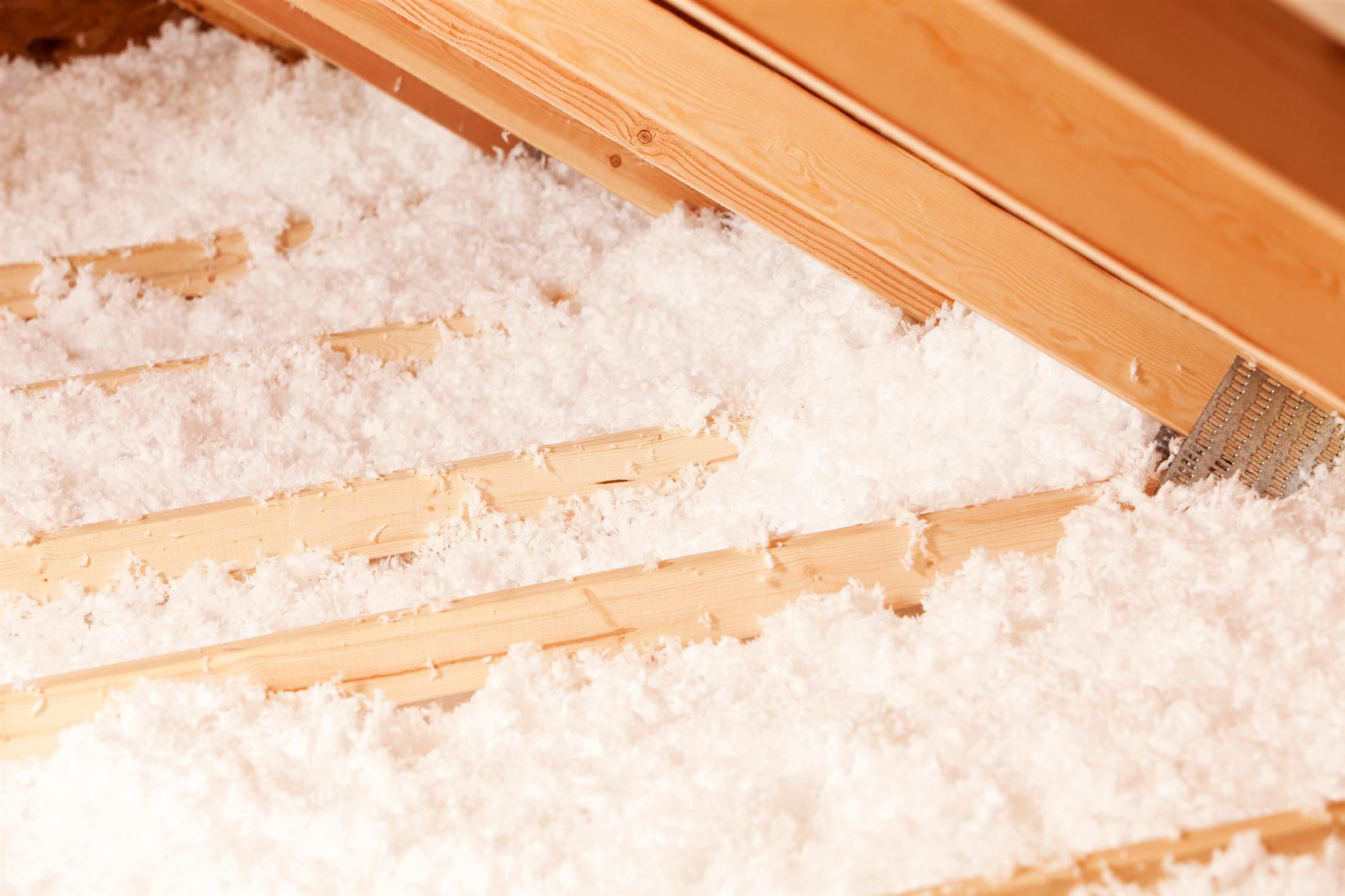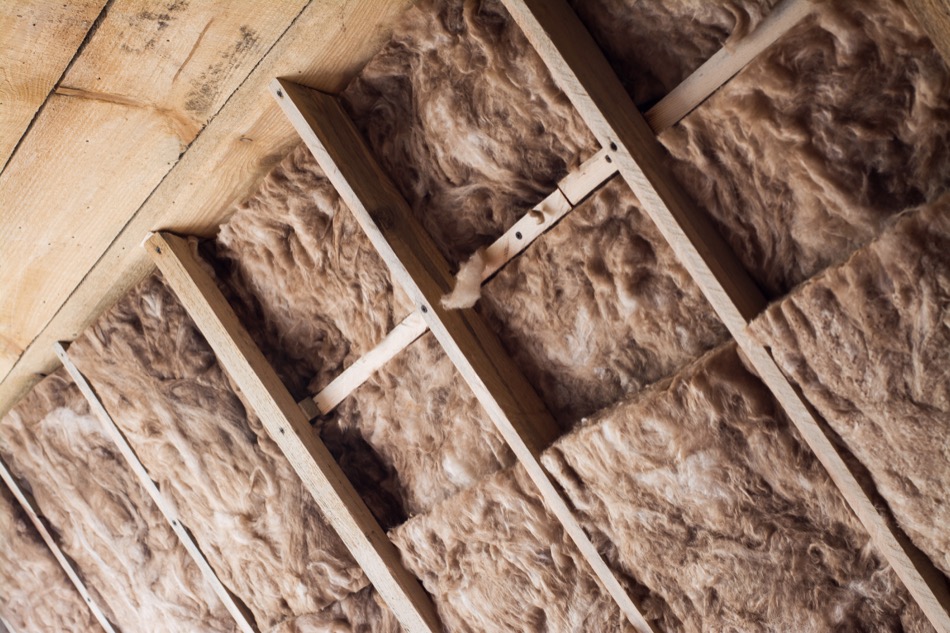Table Of Content

Unlike most common insulation systems, which resist conductive and convective heat flow, radiant barriers and reflective insulation work by reflecting radiant heat. Radiant barriers are installed in homes -- usually in attics -- primarily to reduce summer heat gain, which helps lower cooling costs. Insulation materials run the gamut from bulky fiber materials such as fiberglass, rockwool, cellulose, and natural fibers to rigid foam boards to sleek foils. Rigid foam boards trap air or another gas in their cells to resist conductive heat flow. Highly reflective foils in radiant barriers and reflective insulation systems reflect radiant heat away from living spaces, making them particularly useful in cooling climates. Other less common materials such as cementitious and phenolic foams and perlite are also available.
Types of Insulation All Homeowners Should Know
If you live in a newer house, you can probably get this information from the builder. If you live in an older house, you'll have to inspect the insulation. It’s made of tiny strands of fiberglass that create a pillowy, lofty appearance, though the fibers themselves are extremely itchy and irritating to skin. SIPs are large and heavy, often requiring a crane to set them in place. However, a very experienced DIYer may find their installation manageable.

Low-density polyurethane spray foam
Kraft paper — the asphalt-impregnated brown paper facing available on insulation — is rarely called for these days. When insulation was first developed, it was only an inch or two thick and the attached kraft facing was stapled to studs to keep it from sagging. Insulation today is so “full-bodied” and fills stud and joist cavities so completely that it resists settling—even when walls have been purposely vibrated in tests. As a first step fill in the component calculation request with detailed information about the building's location, orientation, shading, and materials to be used. Therefore, it is very important to seal the airtight layer in a quality manner and make sure that all the critical joints in the construction are sealed. The easiest way to ensure the integrity of the airtight layer is to perform a blower door test.
The range of adhesives gives you greater control of external wall insulation cost
And, since vapor barriers are usually just plastic sheets, many DIYers can easily handle the installation on their own. Vapor barriers aren’t necessarily insulation, but many types of insulation require them to do their job properly. These impermeable vapor retarders reduce the amount of moisture from traveling through the exterior walls, helping prevent mold and mildew on the wall framing, drywall, or even the insulation facing.
Deciding What Type of Insulation to Add
Open cell foam creates an effective barrier against air movement and sound. However, due to the open cells, this foam is more likely to absorb moisture and vapor, so it can require the addition of a vapor barrier on the inside of the foam in many applications. Both materials are a combination of two chemicals and expand in place, but how they insulate differs.
Winter diffusion In the wintertime, the concentration of water vapour (absolute humidity g/m3) in indoor air is approximately 10 times higher than water vapour concentration in outdoor air. Therefore, water vapour will try to move from the inside to the outside. The rule of the thumb is that the inside (airtight) membrane has to be 10 times more vapour-tight than the outside (windtight) membrane for the construction to be safe. Thermal insulation maintains its effectiveness so long as it is dry and there is no air movement within the material. Also known as the heat transfer coefficient, U-values are measured in W/m²K.
'I wanted to cry': Devastating risks of spray foam insulation hidden from Vermont homeowners - VTDigger
'I wanted to cry': Devastating risks of spray foam insulation hidden from Vermont homeowners.
Posted: Mon, 22 May 2023 07:00:00 GMT [source]
Why is thermal insulation so important for saving energy?
In most parts of the United States, insulating the exterior edge of a slab can reduce heating bills by 10% to 20%. When insulating floors above unconditioned garages, first seal all possible sources of air leakage. This strategy has the added benefit of minimizing the danger of contaminants (from car exhaust, paint, solvents, gardening supplies, etc.) in the garage migrating into the conditioned space.
If it is less than an equivalent of R-30 (about 10 to 13 inches), you could probably benefit by adding more. Before insulating, seal any air leaks and make roof and other necessary repairs. If it is located in a conditioned part of the house, also remember to insulate and air seal your attic access. SIPs not only have high R-values but also high strength-to-weight ratios. A SIP typically consists of 4- to 8-inch-thick foam board insulation sandwiched between two sheets of oriented strand board (OSB) or other structural facing materials.
Loose fill and blown-in insulationThis is usually less expensive to install than batt insulation and gives better coverage if properly installed, according to the US Department of Energy. You can also call in a professional contractor to insulate the attic this way. Some types of home insulation are relatively inexpensive in themselves plus they can be fitted on a DIY basis, reducing the cost to insulate a house still further.
Hollow-core units made with a mix of concrete and wood chips are also available. They are installed by stacking the units without using mortar (dry-stacking) and filling the cores with concrete and structural steel. One potential problem with this type of unit is that the wood is subject to the effects of moisture and insects. Insulating outside of concrete block wall places mass inside conditioned space, which can moderate indoor temperatures. Sarah is a freelance journalist and editor writing for websites, national newspapers, and magazines.
Rockwool, or mineral wool made from extruded lava rock, is a great insulation material for typical residential wood-framed structures. This material is made from lava rock which the manufacturer spins at high speeds, creating thin strands of material not unlike fiberglass. It insulates against heat transfer and sound, and it’s fire- and moisture-resistant. Blown-in insulation is applied using a machine that blows a paper-like material into the space to be insulated. You should consider attic or roof radiant barriers (in hot climates), reflective insulation, and foundation insulation for new home construction. To find out if you have enough attic insulation, measure the thickness of the insulation.
The fall months bring all sorts of fun—colorful foliage, festive holidays, the first cozy snowfall. Increased energy bills as the temps cool down and the thermostat gets cranked up. Insulation eases your energy bills while keeping your home more comfortable year-round.
Not all insulation offers the same insulating quality, so it's a good idea to learn more about how insulation works and the types of insulation to choose from. These are the 10 types of insulation every homeowner should know to make an educated decision when installing or replacing home insulation. Simply jamming batts between the rafters of a cathedral ceiling or insulated attic will interfere with the roof’s ability to breathe.
R-value measures how resistant types of insulation is based on the type, thickness and density of the insulation material. Typically, a higher R-value means better climate control and better energy efficiency for your home. The Department of Energy recommends different insulation levels based on your region to increase energy efficiency. By slowing the transfer of heat between your house and the outdoors, insulation helps keep your living space cooler in the summer and toastier in the winter—all while shrinking your energy bills.
They feature tongue-and-groove connections, and installers can run electrical wiring, pipes, and other utilities through the foam. Heat has a natural inclination to both rise and migrate to colder areas. Combine these two tendencies and you can see why air bypasses can reduce the effectiveness of attic insulation by 30 to 70 percent. You can track down bypasses by lifting existing attic insulation and checking for dark patches of moisture or dust. Or head to the attic on a cold day and feel for pockets of warm air or use a stick of incense to check for drafts.
Half-inch drywall is usually sufficient, but check with local building officials before installing. Radiant heat travels in a straight line away from any surface and heats anything solid that absorbs its energy. When the sun heats a roof, it's primarily the sun's radiant energy that makes the roof hot.

No comments:
Post a Comment